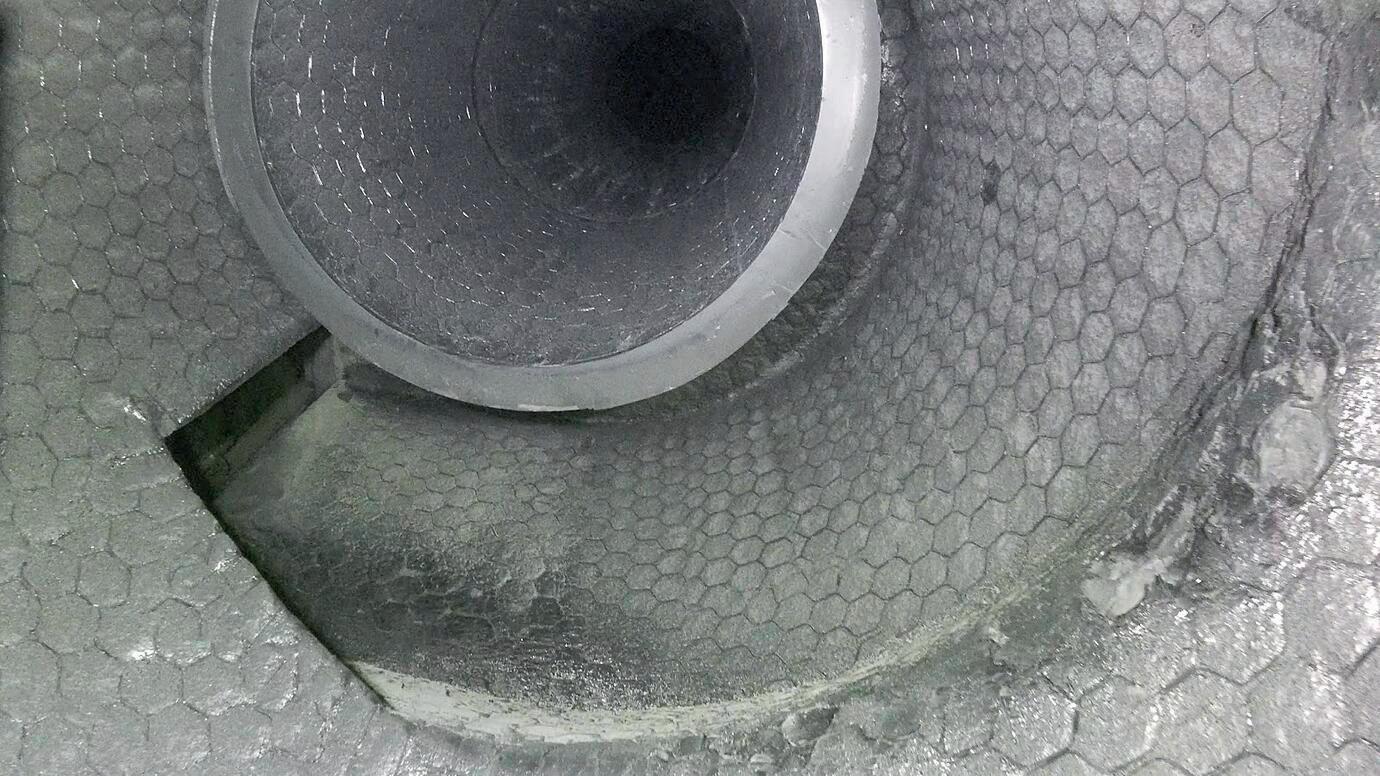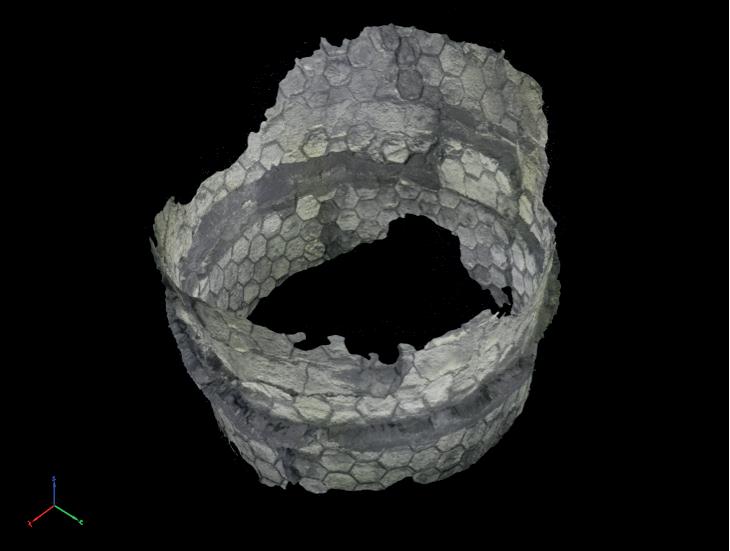
9 minute read
Oil and gas safety takes flight
Zacc Dukowitz, Flyability, USA, details how drones are helping to improve safety at oil refineries.
Drone technology has rapidly improved over the last few years, and with these improvements have come its rapid adoption in the oil and gas industry. Inspections present one of the most common uses for drones in oil and gas. During planned outages, inspectors use high-quality inspection drones to collect visual data remotely, allowing for data to be collected more quickly and more safely than would be possible using a manual approach. The use of drones as a remote visual inspection (RVI) tool does not present any sacrifice in data quality. In fact, in many cases the drone’s visual data will be of the same – or better – quality than the data an inspector could collect in person.
The data will also typically be more comprehensive, since drones can capture video during an entire flight, from which still images can be extracted for further analysis.
How drones improve plant safety during inspections
The five controls that guide safety considerations for industrial work are as follows (in order from most to least effective):1 n Elimination: physically removing a hazard. n Substitution: replacing a hazard with a lower-risk alternative. n Engineering controls: separating workers from a hazard. n Administrative controls: changing the way people work. n Personal protective equipment: providing protective equipment such as helmets, boots or gloves.
For most visual inspections at oil refineries, drones can allow maintenance managers to implement the highest
control: elimination. By taking the place of the inspector for data collection, a professional drone can completely eliminate any potential hazard the inspector would have faced, thus radically improving safety during the inspection.
During internal visual inspections, such as those carried out inside tanks or pressure vessels, inspectors often face the hazards of confined space entry, work at height, and exposure to noxious gases. During external visual inspections, such as those completed outside stacks, inspectors also face the hazard of working at height. These hazards are all eliminated by using a drone to fly into an asset or along the outside of an asset, collecting visual inspection data that shows its condition.
It is important to note that drones are only a data collection tool, and some exposure to the aforementioned hazards will still be required for maintenance operations conducted during plant downtimes. Although a drone may be able to eliminate the hazards an inspector might face, the maintenance itself must still be performed in person, and this work will require maintenance personnel to encounter the hazards that were eliminated during the inspection process.
However, in some sectors, robotics advances are allowing even this part of the maintenance process to be performed remotely. In wastewater infrastructure, for example, a fully-remote maintenance process is now possible by using a drone to conduct an inspection and then using a crawler robot to repair any defects found – all without a person ever having to enter the pipe. That being said, it will still be a long time before robotics have advanced enough to perform most maintenance operations required at oil refineries, or in most industrial scenarios in which drones can be used for inspections.

Figure 1. Flyability’s Elios 2 indoor drone (source: Flyability).

Figure 2. A cyclone separator.
What kinds of assets are inspected by drones at oil refineries?
At oil refineries, drones are typically used to inspect fluid catalytic cracking (FCC) units, cokers, storage tanks, chimneys, and smokestacks.
For the upstream parts of the production process, drones are also being used to inspect ballast and storage tanks in FPSOs, drilling ships, and oil tankers.
Internal inspections, such as those carried out inside FCC units or cokers, will typically be completed using a drone made just for flying indoors. Such drones sit within a cage, which both protects the drone and the interior of the asset in case of collision. In addition to the cage, indoor drones typically have other features built into their design that make them collision tolerant, allowing them to collide and to continue flying unharmed (see Figure 1).
External inspections, on the other hand, such as those carried out on the exterior of stacks, are typically completed using a professional outdoor drone. This is basically the standard design of a commercial drone, without a cage or any other features that would enable flight in confined spaces.
Case study
Fairly recently, the largest oil and gas company in Turkey, Tüpraş, decided to test the use of a caged indoor drone for a visual inspection inside an FCC unit. The FCC unit was located at the Izmit Refinery, which produces 33% of the petroleum products consumed in the country.
One of the primary goals of the test was to find a way to improve safety for these types of inspections. A manual inspection of the FCC unit would require an inspector to enter the confined spaces inside the riser and cyclones of the unit by rope access. Tüpraş wanted to see if these hazards could be eliminated by using a drone instead of a person to collect the visual data that the company needed.
Over a period of three days, inspectors at the refinery were able to use the indoor drone to successfully collect all of the visual data that was needed inside the FCC unit. There was no need for entry in order for the inspection to be completed.
Flyability inspected the following: n The riser: a 50 m (164 ft) long vertical pipe lined with wear-resistant refractory where the heavy hydrocarbons from crude oil mix with a catalyst and are cracked into smaller hydrocarbons. n The vapour overhead pipe: the 30 in. pipe that carries hydrocarbon vapours into a fractionating column where they are separated into gas, gasoline, diesel, paraffin, or other marketable petroleum products. n The cyclones: cyclone separators used to separate hydrocarbon vapours and strip steam from the FCC catalyst (see Figure 2).
The test was a success. The drone not only eliminated all of the hazards for the inspectors, but it also significantly
reduced the amount of downtime needed for the inspection. In total, inspectors saved the equivalent of two and a half days of work, representing 170 manhours.
Time was primarily saved by avoiding the need to cut the top cap of the reactor riser open, which is the standard procedure so that a person can enter the riser in order to perform a visual inspection. The reduced downtime resulted in significant savings for the plant, while also improving safety, representing a win-win for the company.
In addition to images and videos, Tüpraş inspectors used the visual data collected by the drone to create a 3D model of the riser (see Figure 3).
How to conduct a visual inspection by drone
The following is a typical workflow for a drone inspection performed at an oil refinery:2
Planning
The inspection is planned in advance, as with any inspection, with inspectors working alongside other stakeholders to identify all of the assets that require inspection, and specify the types of data needed. When planning a drone inspection, it is important to question whether the drone will fit and, in the worst case scenario, what would happen should the drone get lost.
Data collection
On the day of the inspection, the inspector may fly the drone themselves or they may work with a trained drone pilot to fly it. Regardless of who flies, it is important that the inspector can see the live visual feed from the drone while it is in flight so that they can identify potential defects and spend more time collecting data in any potentially problematic areas, ensuring that they acquire all of the data that they need.
Some large oil and gas companies have developed their own internal drone programmes, with trained drone pilots who are ready to conduct inspections during planned turnarounds or emergency outages. On the other hand, some companies prefer to hire third parties to carry out drone inspections.
A third option is to have a drone fleet and some trained in-house drone pilots, as well as hire contractors for specific types of work with drones. This option is the one that Chevron has chosen; as have many other large companies in the sector.
This hybrid approach allows for constant data collection support during emergencies via in-house pilots, as well as regular maintenance support for routine planned outages. It also allows for flexibility when it comes to special one-off operations via third parties. These operations would require either too much money or too much complexity to keep full-time staff trained for them.

Figure 3. A 3D model of the riser. Data analysis
Some data may be analysed while the drone is in flight. However, a typical drone inspection will work similarly to a manual inspection, with the inspector carefully reviewing the visual data after its collection.
Reporting
After analysing the data, the inspector will create a detailed report with the findings, in which they detail any defects such as corrosion or cracks found in the assets inspected. This reporting will be supported by the images and video collected by the drone, allowing other stakeholders to see the flaws covered in the report.
Another item that is important in reporting from any drone inspection is knowing the location of a defect found in the visual data. When you have a video of an inspection made inside a huge, homogenous structure, such as a diesel storage tank, it can be hard to know exactly where the defect is. However, advances in drone-related software have addressed this problem. New software now allows inspectors to create 3D models of assets, with the capability to add specific ‘points of interest’ inside the model. These models can then be included in the inspection report, allowing other stakeholders to see the specific location of defects found during the inspection.
Choosing drone technology
The drone industry is still relatively new, and sometimes it can be difficult to find reliable technology for one’s specific needs. A good rule of thumb for choosing a professional drone is to first consider the data collection needs, before researching drones that can meet these specific requirements.
For example, if it is necessary to perform outside stack inspections, a drone with high-quality optical zoom may be required; and if it is necessary to perform internal boiler inspections, a high-quality indoor drone may be required.
Another rule of thumb is to look for actual case studies and clients that have gone on record with a company. Any professional drone that is worth purchasing should have a proven track record, with case studies covering specific use case(s) and a list of companies that are using the technology.
References
1. ‘What is the hierarchy of control?’, https://www.flyability.com/ articles-and-media/hierarchy-of-control 2. ‘A guide to how drones are used for inspections’, https://www. flyability.com/drone-inspections










